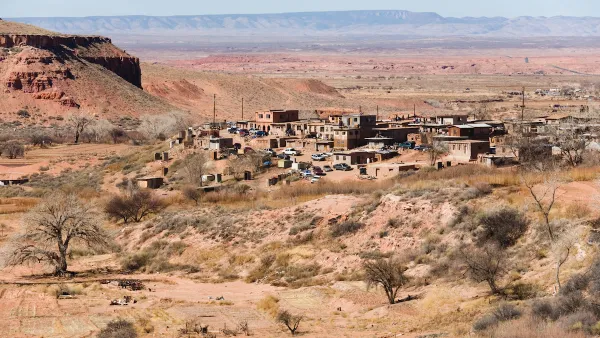Chris Haller parses the data in a recent report on Internet use for implications for how communities should manage their public outreach strategies.
The recent "Digital Differences" report from the Pew Internet Project contains a wealth of fascinating information on the ways in which different demographic segments of America's population access the internet. With a wealth of platforms used by community members to access the internet, a one-size-fits-all strategy for public outreach, such as simply developing a project website, may limit your potential pool of participants. As Haller notes, it is "important to consider other methods now gaining traction to
help you reach out to citizens in alternate ways to engage the citizens
of your community in the planning process."
Among some of the relevant findings on the report to consider when devising a public outreach plan:
- The rise of mobile is changing the story. Groups that have
traditionally been on the other side of the digital divide in basic
internet access are using wireless connections to go online.
- Email and search are today's most common Internet activities, but other
activities are becoming pervasive as well. Using social networking
sites, a pursuit once dominated by young adults, is now done by 65% of
Internet users- representing a majority of the total adult population. - The 27% of adults living with disability in the U.S. today are significantly less likely than adults without a disability to go online (54% vs. 81%).
- One in five American adults does not use the internet. Senior
citizens, those who prefer to take our interviews in Spanish rather than
English, adults with less than a high school education, and those
living in households earning less than $30,000 per year are the least
likely adults to have internet access.
FULL STORY: Digital Differences to Consider When Planning Your Public Outreach Strategy

National Parks Layoffs Will Cause Communities to Lose Billions
Thousands of essential park workers were laid off this week, just before the busy spring break season.

Retro-silient?: America’s First “Eco-burb,” The Woodlands Turns 50
A master-planned community north of Houston offers lessons on green infrastructure and resilient design, but falls short of its founder’s lofty affordability and walkability goals.

Delivering for America Plan Will Downgrade Mail Service in at Least 49.5 Percent of Zip Codes
Republican and Democrat lawmakers criticize the plan for its disproportionate negative impact on rural communities.

Test News Post 1
This is a summary

Test News Headline 46
Test for the image on the front page.

Balancing Bombs and Butterflies: How the National Guard Protects a Rare Species
The National Guard at Fort Indiantown Gap uses GIS technology and land management strategies to balance military training with conservation efforts, ensuring the survival of the rare eastern regal fritillary butterfly.
Urban Design for Planners 1: Software Tools
This six-course series explores essential urban design concepts using open source software and equips planners with the tools they need to participate fully in the urban design process.
Planning for Universal Design
Learn the tools for implementing Universal Design in planning regulations.
EMC Planning Group, Inc.
Planetizen
Planetizen
Mpact (formerly Rail~Volution)
Great Falls Development Authority, Inc.
HUDs Office of Policy Development and Research
NYU Wagner Graduate School of Public Service




























